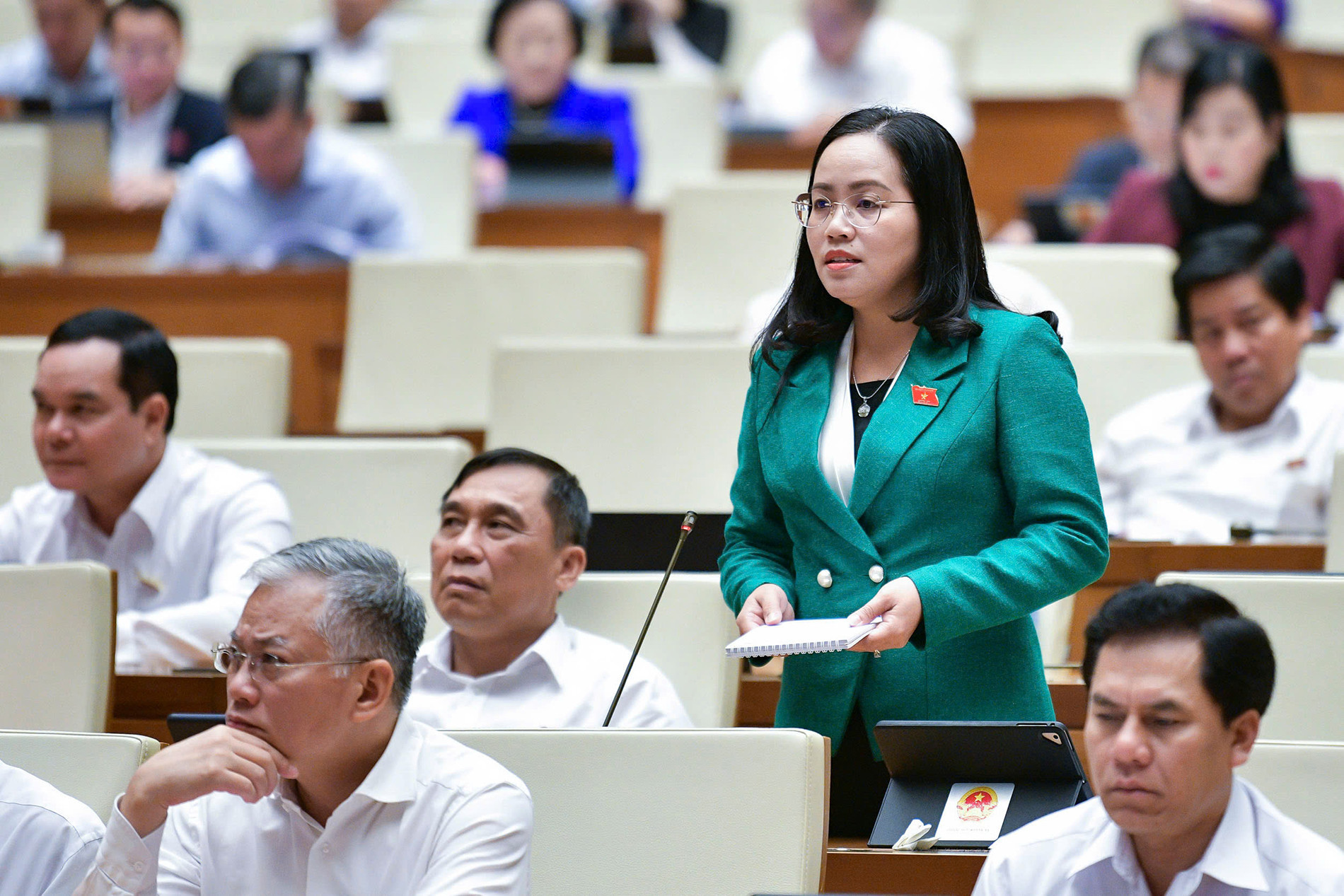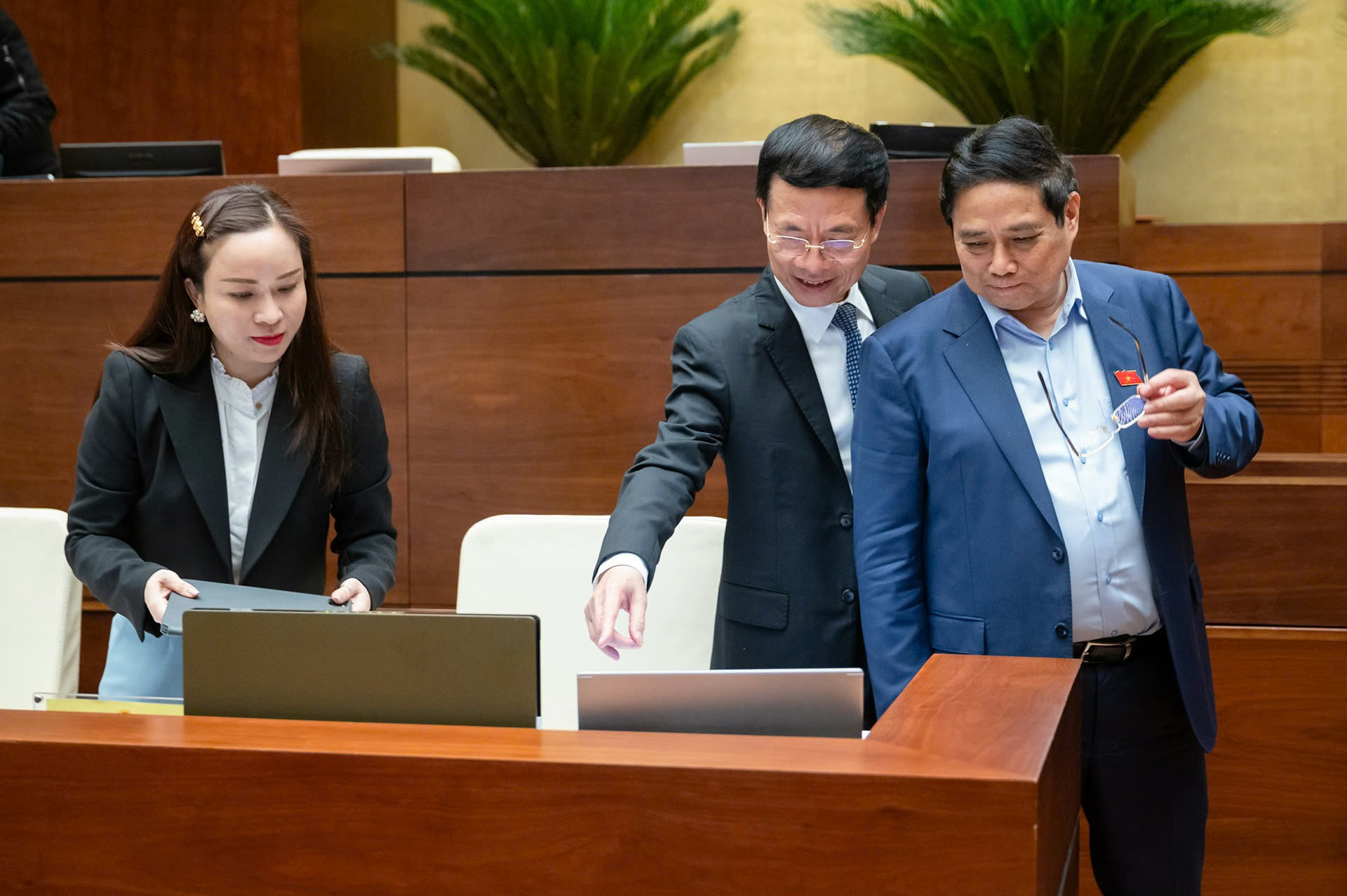During a National Assembly Q&A session with Minister of Information and Communications Nguyen Manh Hung, delegates raised questions about investments in telecommunications infrastructure, especially in remote and ethnic minority areas lacking mobile coverage.
Delegate Ho Thi Kim Ngan (Bac Kan) noted that as of September 2024, 761 villages still lacked mobile coverage, asking, “What is the Minister’s responsibility in this matter, and when can we expect these villages to have mobile coverage to ease the burden on residents?”

In response, Minister Hung explained that over 100 of these villages lack electricity, while another 100 locations fall outside designated priority areas and are therefore the responsibility of telecommunications providers. The remaining locations are eligible for support from the Universal Service Fund.
For areas lacking electricity, MIC is coordinating with the Ministry of Industry and Trade and the Electric Power Corporation to find solutions, including exploring satellite services. MIC is currently working with telecommunications companies to bring low-orbit satellite services to Vietnam, targeting areas that are otherwise difficult or inefficient to cover with traditional mobile networks.
For locations within providers’ service responsibility, MIC has urged telecom operators to speed up coverage expansion with a target completion date of 2024, or by Q1 2025 at the latest.
For locations under the Universal Service Fund’s purview, Minister Hung indicated they would be addressed following the implementation of a new telecommunications law decree, expected by the end of this year. "While the official commitment is to cover all black spots by June 2025, our goal is to complete the work by March 2025," Minister Hung emphasized.
Minister Hung also highlighted that 99.8% of Vietnam’s population now has 4G coverage, surpassing the 99.4% average in many developed countries.
Answering another question from Delegate Chu Thi Hong Thai (Lang Son), Minister Hung noted that the Covid-19 pandemic revealed more coverage gaps, especially as digital commerce and online services increased, spotlighting the need for improved connectivity in remote areas.
During the pandemic, thanks to special mechanisms granted by the National Assembly, MIC managed to expand coverage to 2,500 villages. Currently, 761 newly identified coverage gaps remain, pending regulations under the revised Telecommunications Law. Minister Hung acknowledged delays in issuing the decree, which should have been finalized by July 1, 2024, and took personal responsibility for the delay.

Addressing delays in issuing regulations, Delegate Dong Ngoc Ba (Binh Dinh) urged the government to adopt a more systematic, long-term approach to enhancing institutional capacity, particularly given that new laws will provide an essential framework for several issues.
Minister Hung responded by emphasizing digital tools to streamline regulatory processes. Demonstrating a virtual assistant that helped answer Delegate Nhi Ha’s question, he introduced MIC’s ongoing development of this AI assistant to assist in drafting new regulations.
The assistant will identify legal overlaps or inconsistencies across various laws, decrees, and circulars. Expected to be fully operational by year-end, this tool is currently in use at MIC and partly at the Ministry of Justice.
Minister Hung also suggested that revising laws could be made faster by allowing single-issue or targeted amendments rather than waiting for comprehensive revisions, which often span two National Assembly sessions.
Thu Hang, Tran Thuong, Quang Phong